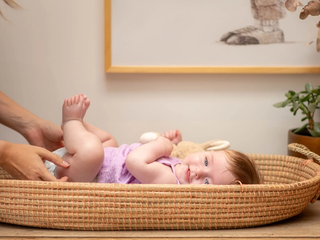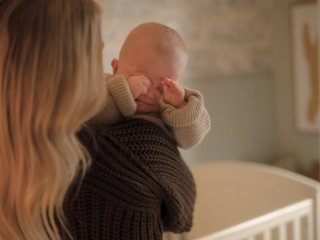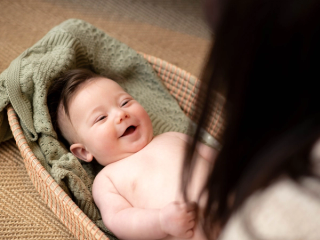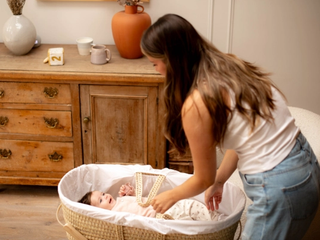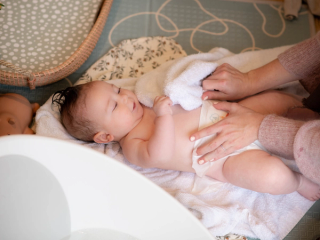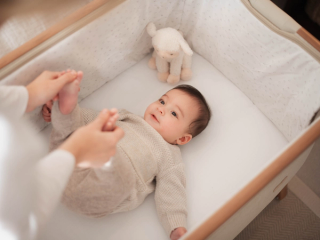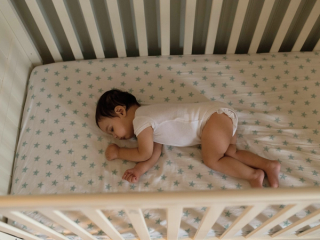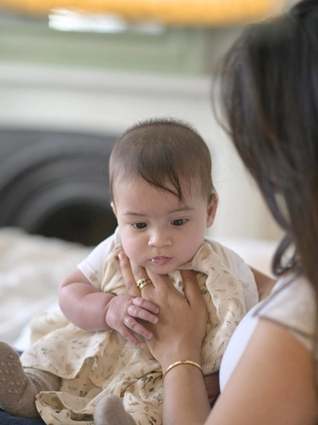
- Home
- Advice Hub
- Newborn
- Essential Newborn Care
- How To Wind And Burp A Baby
How to wind and burp a baby
Louise, @thehonestmidwife, shares her top tips and tricks to help you learn how to correctly wind and burp your little one after their feeds.
After every feed, it is important to take some time to wind or burp your baby.
When your baby feeds, they swallow air along with the milk. This can then become trapped in their stomach as air bubbles, which can be uncomfortable and cause them to become unsettled and distressed.
Some babies struggle more with wind than others, but by taking time to burp them, you can make it easier for them to get rid of some of the air they have swallowed before it becomes a problem.
When do I need to burp my baby?
Most people burp their baby after a feed but sometimes, it can be helpful to take a break and burp them during a feed too. Look out for signs that your baby may need burping while they are feeding. If they are wriggling or squirming or seem to be trying to pull away from the breast or bottle, it is a good idea to stop and try winding them to see if it helps.
What position is best for burping a baby?
There a few different ways you can burp your baby and you may find you end up using a mixture of all of them at some point. The most important thing is to make sure that your little one’s head and neck is supported and that they are not in a curled up position. Their back should be nice and straight.
One really popular way of burping your baby is over your shoulder. Hold your baby in an upright position so their chin is resting on your shoulder and use your hand to support their head. Pat your baby gently on the back – there is no need for any kind of force.
You can do this either while sitting down or stood up, you may even want to walk around during burping, especially when your baby is a little older and has good head control. Babies often bring up a little bit of a milk when they’re being winded, so pop a muslin or cloth on your shoulder to protect your clothes.
Another good burping position is to sit your baby on your knee facing away from you. Put the palm of your hand on their chest and support their neck and chin, while using your other hand to pat or rub their back. Lean your little one forward slightly while you do this.
Alternatively, you can lie your baby face down across your lap, using your hand to support their chin. Use your other hand to gently rub or pat their back.
How long do I need to burp my baby for?
Burping your baby doesn’t need to be something that takes a long time. Spending just a couple of minutes patting or rubbing their back will usually be enough.
While burping is important for newborns, most babies will outgrow the need to be burped by the time they reach around four to six months.
What are the signs of trapped wind?
If your baby is showing signs of trapped wind, it is particularly important that you spend time burping them to help ease their discomfort. If your baby is crying after a feed and arching their back, this could be a sign they have wind. Other signs include drawing their legs up to their stomach and clenching their fists.
If your baby is unsettled during a feed, pulling away and thrashing about or squirming, stop and try winding them.
What do I do if my baby won’t burp?
Sometimes your baby won’t burp after a feed and this isn’t anything to worry about. But if your baby is showing signs of trapped wind and burping them doesn’t help, there are some other techniques you can try.
Lie your baby on their back and use two of your fingers to massage their tummy with gentle circular movements in a clockwise direction. You could also try pushing their knees up towards their tummy and cycling their legs – a bit like if they were riding a bike.
If trapped wind is a persistent problem and burping isn’t helping, ask your health visitor or GP for advice.
Is there any way of preventing trapped wind?
It is impossible to completely eliminate the possibility of your baby getting trapped wind but there are things you can do to try to prevent it becoming an issue. If you are breastfeeding, make sure your baby is latched on properly at every feed because a poor latch can lead to your little one swallowing air.
If you are bottlefeeding, tilting the bottle so the milk completely covers the hole in the teat will help. You may also want to consider buying bottles that have been designed to limit how much air your baby swallows.
When making up formula, try to avoid shaking the bottle to dissolve the powder as this creates air bubbles which your baby will then swallow when they feed. Rolling the bottle in between your hands to mix the formula may take you a little bit longer, but your baby’s milk will contain fewer air bubbles.
Advice & tips

Want to read more? Join the HiPP BabyClub for full access to this article.
As a BabyClub member, you'll get access to a range of exclusive benefits, including:
Monthly competitions
Discounts from our Partners
Expert advice tailored to your little one's age
Weaning recipes
HiPP shop discounts*
*10% off HiPP's online shop does not apply to our First Infant, Anti-Reflux or Comfort Formula Milk.
Important notice: Breastfeeding is best. Follow on milk should only be used as part of a mixed diet from 6 months. Talk to a healthcare professional.




